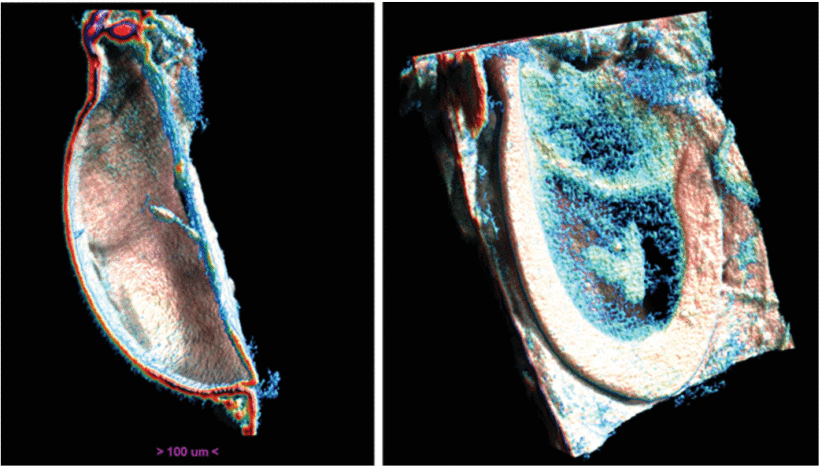Toward a Bio-Inspired Acoustic Sensor: Achroia grisella’s Ear
Creatures in nature also encounter a few challenges researchers face in engineering problems and designs. How these creatures solve them may differ from what engineers would come up with. However, the principles of evolution make the solutions generally simple, resourceful and energy-efficient, which are all desirable tenets for engineering.
One such challenge is that of acoustic sensors that are diminutive in size and directional, which means being able to determine the direction of the sound source. Technology miniaturization has been a trend for the past few decades, both for ease and comfort of the users and to reduce energy consumption and the materials used. Directionality is desirable in acoustic sensors, like smartphones or cochlear implants, where canceling ambient noise is advantageous.
Nature is full of examples of solutions to small-scale directional hearing. One among them is Achroia grisella. A. grisella is a nocturnal moth that uses hearing to avoid bats, its natural predator. But, unlike most moths, A. grisella also uses hearing for mating, where the females track the males listening to the calling. It does so with a surprisingly simple ear and can do it monoaurally, i.e., using just one ear instead of two. This is believed to be due to the shape of its eardrum. The eardrums are roughly oval, have two sections of different thicknesses, and have four auditory neurons directly attached to the thinner section.
Inspired by the moth eardrum, the researchers created a design that was greatly simplified and resembled the original. They followed a threefold approach to develop the model. In the first place, analytical equations were considered for the simpler iterations of the model, which were then compared against COMSOL Multiphysics simulations, where natural vibration modes and frequencies were extracted. Lastly, they choose 3D printing for sample manufacturing and laser Doppler vibrometry for examining the samples. The results from the three approaches against each other were then compared.
The model evolves from circular to elliptical and then to elliptical with two halves of different thicknesses. The first two models show no directionality but show agreement between the results of the three approaches. The elliptical double-thickness model is examined in simulation and expected to show a changing directional pattern depending on the frequency. The 3D-printed samples were observed with the laser Doppler vibrometer that examines the deflections of the sample when excited by the sound produced by a speaker.
A reasonable agreement was found between the directional patterns expected from simulations and observed on the 3D printed samples. However, the 3D printing of small structures is challenging, making it difficult to achieve repeatability. But, on the upside, it is quick and relatively cheap compared to other manufacturing methods.
The promising results indicate that passive acoustic structures can be 3D printed. The aspects like a broader bandwidth or piezoelectric materials and ways to widen the plate's sensitivity bandwidth to make it viable for applications like hearing aids are yet to be explored and researched.




